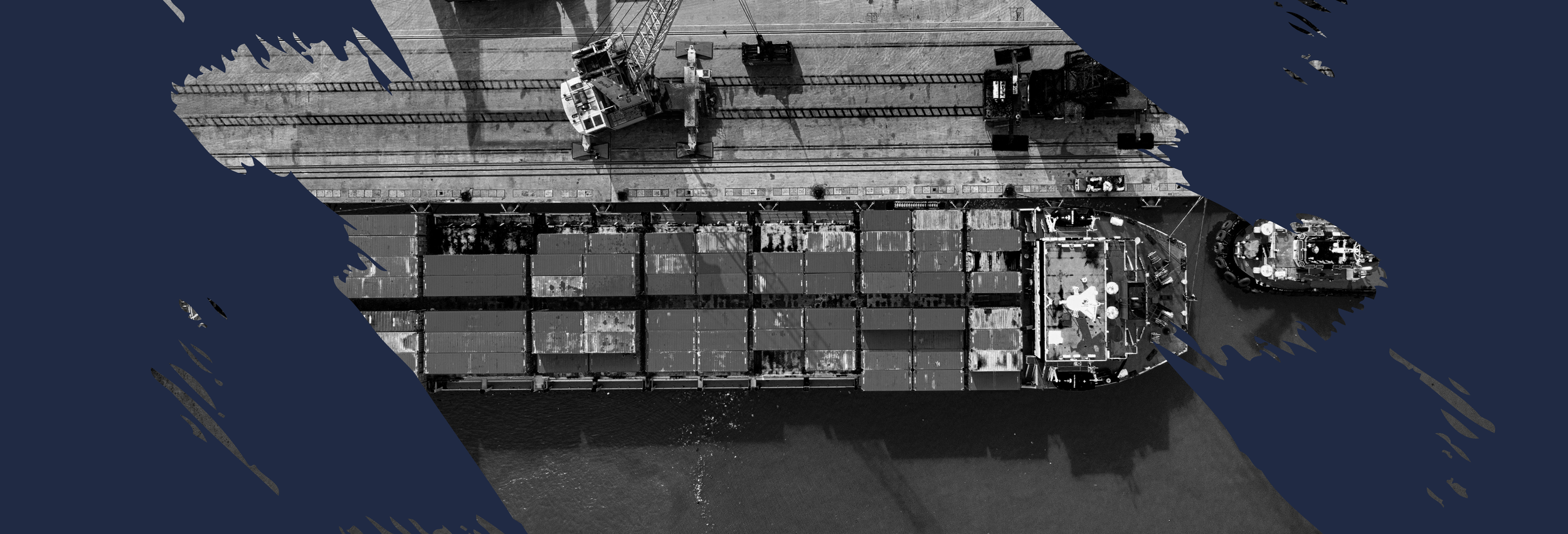
Blog
Evolution Sets Sail: Transforming Ship Travel with Darwin-Inspired Solutions
Dr James Mason - Data Scientist
In 1831, Charles Darwin embarked on the HMS Beagle, marking the first step towards the theory of evolution. Almost 200 years later, Darwin’s theory of evolution is now ready to embark on the next generation of low-carbon sailing ships. In this blog, James Mason explains how Smart Green Shipping’s new evolutionary algorithm is transforming fuel-efficient ship routing.
Sailing Ships: The Modern Wing Sail
In the fight against climate change, large cargo ships are turning to modern wing sails to cut carbon emissions. These sails, which stand taller than six giraffes, apply the same principles as aeroplane wings to move ships using the power of the wind. While still using an engine, the sails lower the demand for fossil fuels, cutting carbon emissions.
To maximise the benefits of wing sails, ships can use weather routing software to find the best route and speed along a journey. This software helps captains and crew to take advantage of good wind conditions, making the sails work even better.
The latest studies show that harnessing wind power in this way can improve the performance of sails by up to 2.5 times, cutting carbon emissions of large commercial cargo ships by over 30%.
Smart Green Shipping’s new FastRoute software offers this weather routing service to customers. It predicts the most fuel-efficient routes, making the most of sail technologies by saving on costs and emissions.
The Theory of Evolution
While, in days gone by, ship routing was performed by hand using navigational charts, today’s weather routing software exploits powerful optimisation algorithms.
In principle, evolution is a form of optimisation. Each generation adapts to become better than the last. One giraffe will be taller than others, allowing it to reach food that the others can’t. In turn, this makes the giraffe more likely to survive, increasing the chance that this advantageous gene will pass on to the next generation.
And now, FastRoute is harnessing this fundamental principle of nature to solve the next generation of climate change problems.
The Darwin-Inspired Weather Routing Solution
To solve the weather routing problem using evolution, we first need an initial population of individuals.
Returning to our giraffe example, the classical interpretation of an individual would be one giraffe. A population of individuals would be 100 giraffes. For ship routing, the giraffe would be replaced by one feasible path between a ship’s departure point and arrival point. A population, then, would be 100 feasible paths. These 100 paths are often generated at random using a selection of points in the ocean and form our initial population.
One Individual Path
A Population of Individual Paths
An individual and population of individuals form the starting point in the computational process of evolution.
Next, the algorithm uses the principle of generations to mirror evolution’s ability to pass on genetic material from parent to child. Moving from one generation to the next relies on three key steps: 1) selection, 2) crossover and 3) mutation.
First, selection chooses individuals in the parent generation that are the best, giving them more chance to pass on their genetic material. For giraffes, this is survival of the fittest; individuals with traits better suited to their environment are more likely to survive and reproduce. My neck is longer. I can reach more food. I’m more likely to pass on my advantageous genetic material.
Ship routing calculates the fuel use of each individual path to achieve this selection process, increasing the chance that individuals with lower fuel consumption are selected to pass on their genetic material.
Second, crossover passes on genetic material between two parents to form children of the next generation. Typically, two parent giraffes would mate to combine genetic material (information from chromosomes) to create children. For ship routing, this involves swapping route information between two parent paths. For example, the first half of one path could be combined with the second half of another path to create a new child path.
Two Individuals Before Crossover
Crossover points highlighted in orange.
Two Individuals After Crossover
The second half of the blue path swaps with the second half of the green path.
The evolutionary process of crossover swaps genetic material between individual paths.
Finally, evolution creates random mutations in genes to diversify genetic material. This is what gives the giraffe a longer neck in the first place. Ship routing employs this by taking a random point or selection of points on the ship’s route and mutating them by a random amount.
By repeating selection, crossover and mutation across the whole population of paths for hundreds of generations, the theory of evolution finds an increasingly optimum population. Once complete, one best individual path is chosen and given to the ship captain, providing them with the most fuel-efficient route for their journey that optimises weather and maximises the benefits of wing sails.
Weather Optimised Shipping Route
Evolution finds the shipping route with the lowest fuel consumption to cut carbon emissions in the shipping sector.
While the theory of evolution is almost 200 years old, computational techniques are still harnessing the powerful optimisation qualities of the natural world. By doing so, Darwin continues to make revolutionary changes to modern society. With sails seen as one of the most promising decarbonisation solutions for ships today, Smart Green Shipping’s new evolutionary algorithm is set to play a key role in the future battle against climate change.





